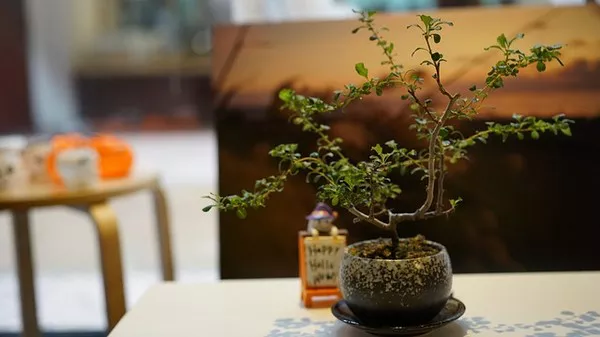Bonsai, an ancient art form originating from China and refined in Japan, involves cultivating miniature trees that captivate with their beauty and symbolism. The process of creating a bonsai tree involves nurturing a small tree in a confined space to replicate the appearance of a mature tree in nature. While the art of bonsai demands patience and dedication, there are certain techniques that can be employed to accelerate the growth of these miniature masterpieces. In this article, we will explore the various factors that contribute to the growth of bonsai trees and provide practical tips to achieve faster and healthier growth.
Choose the Right Bonsai Species
Selecting the appropriate tree species is fundamental to achieving accelerated growth. Some species are naturally more amenable to bonsai cultivation and adapt well to the restrictive environment of a small container. Juniper, Ficus, Japanese Maple, and Pine are among the popular choices for bonsai due to their resilience, rapid growth rate, and adaptability. Researching the specific needs and growth patterns of the chosen species will allow you to tailor your care accordingly, thus optimizing growth.
Quality Soil and Potting
Bonsai trees rely heavily on the soil they are planted in, as it provides essential nutrients, water retention, and aeration. Invest in high-quality bonsai soil that promotes healthy root growth and drainage, ensuring the tree does not suffer from waterlogged roots. Regularly repot your bonsai to refresh the soil and give the roots ample space for growth. Frequent repotting helps prevent the roots from becoming root-bound and boosts the overall vigor of the tree.
Pruning and Trimming
Pruning and trimming are integral components of bonsai care. Regularly removing excessive growth and unwanted branches helps direct the tree’s energy towards the growth of essential branches and foliage. By strategically pruning and trimming, you can create a well-balanced canopy and stimulate growth in the desired areas. Be cautious not to over-prune, as it can weaken the tree and hinder its growth potential.
Wiring Techniques
Wiring is a technique used to shape the bonsai’s branches and trunk. By carefully wrapping copper or aluminum wire around the branches, you can guide their growth and create the desired aesthetic. However, it is essential to monitor the wire regularly to prevent it from cutting into the bark as the tree expands. Improper wiring can cause damage and inhibit growth, so be sure to remove the wire before it leaves any permanent marks.
Adequate Sunlight
Bonsai trees require an ample amount of sunlight to thrive. Ensure that your tree receives the appropriate amount of direct or indirect sunlight based on its species and environmental conditions. Positioning the bonsai strategically in your garden or home will maximize its exposure to sunlight. However, be cautious of excessive heat during scorching summers, as it may lead to sunburn on the leaves. Consider providing partial shade during such conditions.
Temperature and Climate Control
Temperature and climate play a crucial role in bonsai growth. Different species have varying temperature requirements, and maintaining these ideal conditions will promote healthier and faster growth. If you live in an area with extreme weather conditions, consider moving your bonsai indoors or providing protective covering during harsh seasons.
Adequate Watering
Overwatering or underwatering can be detrimental to bonsai growth. Achieving the right balance is essential. Water the tree thoroughly and consistently, ensuring that the soil remains slightly damp but not soaked. Bonsai trees in smaller pots may require more frequent watering, while larger pots retain moisture for longer periods. Monitoring the soil’s moisture level and adjusting your watering schedule accordingly is vital for healthy growth.
Fertilizing
Fertilizing is essential to provide the bonsai with the necessary nutrients for vigorous growth. Use a balanced fertilizer, specifically designed for bonsai trees, and apply it during the growing season. Follow the recommended dosage, as over-fertilization can lead to nutrient imbalances and damage the tree’s roots.
Root Pruning
Root pruning is a practice that involves trimming or removing some of the tree’s root mass during repotting. This process stimulates new root growth and ensures a healthier root system. By regularly root pruning, you prevent the roots from becoming root-bound, enhancing nutrient absorption and overall tree health.
Disease and Pest Control
Regularly inspect your bonsai tree for any signs of pests or diseases. Promptly address any issues you detect, as they can hinder growth and even lead to the death of the tree if left untreated. Utilize natural or chemical treatments, depending on your preference, to control pests and diseases effectively.
Conclusion
Growing a bonsai tree faster requires a combination of scientific knowledge, dedicated care, and artistry. By selecting the right species, providing suitable soil and potting, mastering pruning and wiring techniques, and optimizing environmental conditions, you can accelerate the growth of your bonsai while maintaining its health and beauty. Remember that bonsai cultivation is a patient and rewarding process, and the joy of nurturing a miniature tree is a journey in itself. Embrace the process, continually learn, and appreciate the marvels of nature as you craft your living masterpiece.


